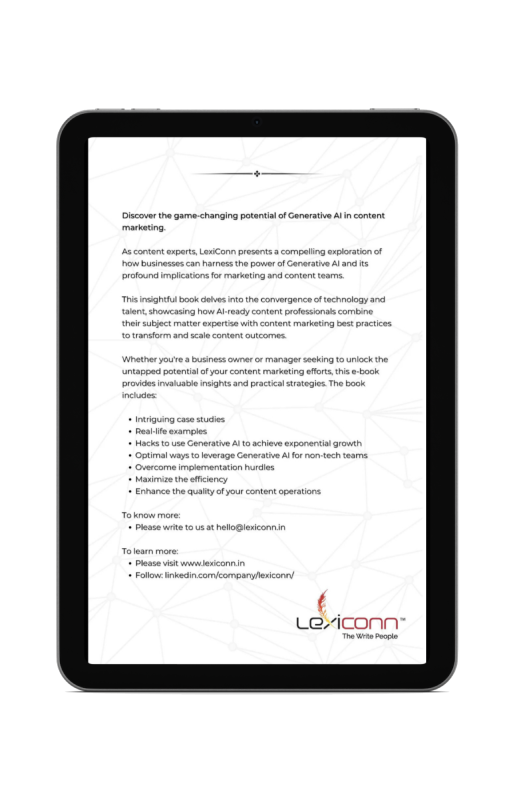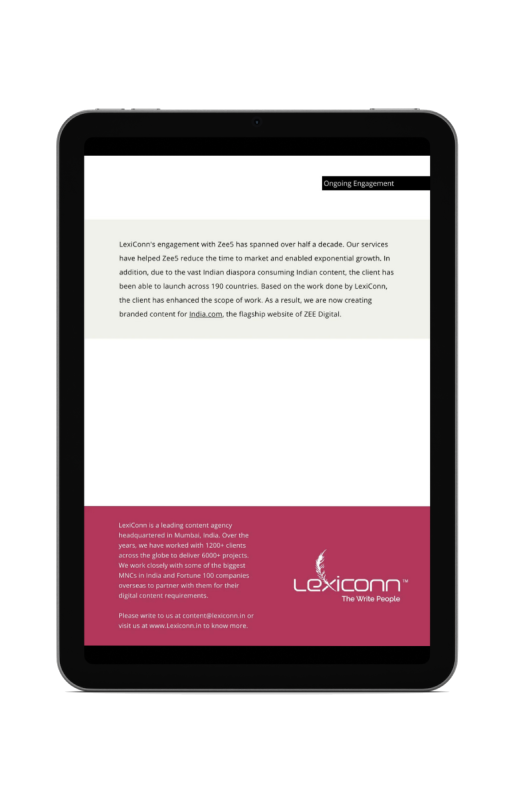
In today’s digital-first world, enterprises generate massive volumes of content across multiple platforms—websites, social media, emails, knowledge bases, and internal communications.
While content is an invaluable asset, managing it effectively is a challenge, especially for large organizations with diverse teams, global audiences, and strict compliance requirements. Without a structured content governance framework, businesses risk inconsistencies, inefficiencies, and even legal repercussions.
Content governance is the foundation that ensures content remains accurate, aligned with brand messaging, and compliant with industry regulations. It involves setting up clear policies, workflows, and roles to streamline content creation, distribution, and management.
A lack of governance can lead to disjointed messaging, duplication of efforts, and increased operational costs.
This blog explores why enterprises need a structured approach to content governance and how it can fuel business growth. Whether you are a marketing leader, content strategist, or decision-maker, understanding the importance of content governance will help you optimize content processes and maintain a strong brand presence.
Partnering with a content writing agency in India can further simplify the implementation of a governance framework, ensuring efficiency and consistency at scale.
Content governance is the structured process of managing content creation, distribution, and maintenance across an enterprise. It establishes clear rules, workflows, and ownership to ensure content remains consistent, compliant, and aligned with business objectives.
For large enterprises, content is produced across multiple departments, geographies, and digital platforms. Without a governance framework, this leads to:
A strong content governance model ensures:
Without governance, enterprises risk losing credibility and facing operational bottlenecks. Implementing a structured approach with the expertise of a content marketing agency in India can help organizations manage content efficiently while scaling their digital presence.
For content governance to be effective, enterprises must implement a structured framework that covers every stage of the content lifecycle. A well-defined governance model ensures content remains relevant, organized, and aligned with business objectives. Below are the key components of a successful content governance strategy:
Every enterprise must have a clear content strategy that defines its purpose, audience, and business objectives. Without a strategic foundation, content creation becomes random and ineffective. A well-structured strategy should include:
Partnering with a content marketing agency in India can help enterprises build a robust content strategy that aligns with their business goals and audience needs.
Enterprises need a standardized process for content creation, approvals, and publishing. A well-defined workflow prevents bottlenecks and ensures accountability. Key aspects include:
By streamlining workflows, businesses can enhance efficiency and reduce turnaround time while maintaining content quality.
A disorganized content repository makes it difficult for teams to locate and repurpose content. Implementing structured content categorization ensures:
Enterprises should implement a content taxonomy that aligns with their industry and audience preferences, ensuring accessibility and usability.
Regulatory compliance is crucial, especially for industries dealing with sensitive information. Governance frameworks should include:
By integrating compliance measures into the content governance framework, enterprises mitigate legal risks and maintain trust with stakeholders.
A well-structured content governance framework is not just about organization—it directly impacts an enterprise’s ability to scale, engage audiences, and drive revenue. By implementing a structured approach, businesses can achieve the following key benefits:
Inconsistent messaging and outdated information can damage an enterprise’s credibility. When content governance is in place:
For large enterprises, reputation is everything. A well-governed content ecosystem ensures that messaging remains reliable and authoritative, strengthening brand loyalty.
Without governance, content teams often duplicate efforts, wasting resources. A structured governance model helps by:
By improving efficiency, enterprises can optimize content production costs while maintaining quality and consistency.
As enterprises expand into new markets, content must be adapted for diverse audiences while maintaining brand integrity. A strong governance framework enables:
Scaling content operations efficiently is only possible when governance structures are in place to manage workflows and compliance at scale.
Enterprises that consistently produce high-value long-form content for B2B establish themselves as industry leaders. A governed content strategy ensures:
With a structured governance approach, businesses can build authority in their industry and position themselves as go-to sources for valuable insights.
Content governance directly influences search engine rankings and user experience. When content is structured properly:
By implementing governance best practices, enterprises can maximize their content’s reach and impact while enhancing audience engagement.
Successfully implementing content governance requires a strategic and well-structured approach. Large enterprises must establish clear processes, leverage the right tools, and foster a culture of content accountability. Below are some best practices to ensure smooth governance implementation:
A content governance framework is only effective when teams understand their roles. Enterprises should:
When roles are well-defined, content operations become more streamlined, reducing inefficiencies and ensuring quality control.
Without structured workflows, content production can become chaotic, leading to inconsistencies and delays. Best practices include:
By formalizing content workflows, enterprises can enhance productivity and maintain high editorial standards.
For large enterprises with extensive content repositories, organizing content effectively is crucial. This involves:
A well-structured content taxonomy ensures that teams can quickly locate, repurpose, and optimize content for various channels.
Enterprises operating in regulated industries must ensure content adheres to legal and compliance standards. Key governance policies should cover:
Regular audits and compliance checks help mitigate risks and protect the enterprise from potential legal challenges.
Manual governance processes can be time-consuming and prone to errors. Enterprises should utilize:
Technology plays a crucial role in simplifying governance and ensuring content remains structured, accessible, and up to date.
Content governance is not a one-time process—it requires continuous monitoring and optimization. Enterprises should:
By continuously improving governance strategies, enterprises can adapt to changing content demands and maintain high-quality content experiences.
Establishing a robust content governance framework is essential for large enterprises looking to scale, maintain consistency, and maximize content ROI. However, implementing and managing governance effectively requires expertise, the right tools, and a strategic approach. This is where LexiConn can help.
As a leading content writing agency in Mumbai, LexiConn specializes in creating structured, high-quality, and scalable content solutions tailored for enterprises.
Whether you need a content governance strategy, workflow optimization, or a complete content revamp, our team of experienced professionals ensures your brand maintains consistency, compliance, and engagement across all channels.
At LexiConn, we believe in demonstrating our expertise before you commit. That’s why we offer:
Take the first step toward structured and scalable content governance. Book your free consultation today, and let’s build a content strategy that drives results.



I have read and accept the Privacy Policy
Read More